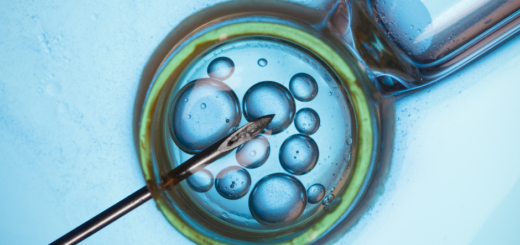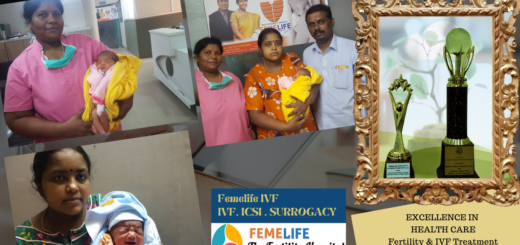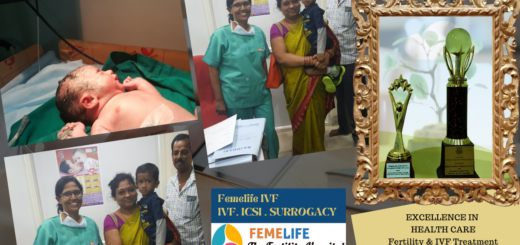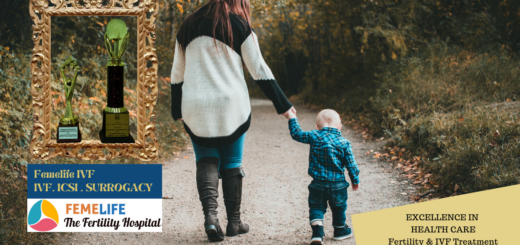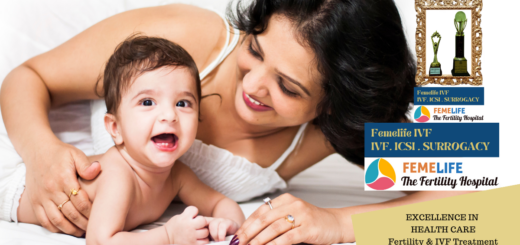Female Egg Life: Production, Maturation & Fertilization

The best indicator of female egg quality is a woman’s age. At the age of 25, 75% of women’s eggs are chromosomally normal. By the age of 35 years of age, about 50% of women’s eggs are chromosomally normal. At the time you reach 40 years, only about 10-15% of your eggs are chromosomally normal.
Structure of female egg cell
The main parts of the human eggs cell, which are together with an illustration of a real human egg are:
Nucleus:
The nucleus is the heart of the egg cell which contains most of the genetic material in the form of chromosomes. It is where the matter of inheritance (gene) are found. An egg, like sperm, contains half the number of chromosomes as a normal cell, which is 23 chromosomes. Egg and sperm combine during fertilization to produce an embryo. As a result , embryo will have the normal 46 chromosomes in total.
Cytoplasm:
The cytoplasm is a gel-like substance that holds all the cells’ other internal structure, called organelles. It is the place for cell’s activities to keep it alive and functioning properly. Among the most important organelles are structures called mitochondria, which supply the most of the energy of the cells.
Zona pellucida:
The zona pellucida is an outer membrane of the egg. Human sperm produces chemicals to dissolve this layer in order to enter the egg. The egg walls become thick with age resulting in fertilization failure in older women.
Hatching an egg or embryo is a process whereby the embryo comes out through small openings. Using various techniques a hole is made on the egg wall to allow the developing cluster of cells to hatch. Without this opening, they would not be able to break out their tough shell and implantation of a pregnancy would not occur.
Corona Radiata:
The corona radiata is the outer layer of an egg and consists of two or three layers of cells from the follicle. They are attached to the zona pellucida. This is the outer protective layer of the egg and their purpose is to supply vital proteins to cells.
Human egg size:
The human eggs or ovum which are the biggest cells in the human body. It Is very tiny and measures approximately 0.12 mm in diameter.
How the ovaries produce eggs?
Female eggs are present in the ovaries at birth. Women have two ovaries in the pelvic region by the side of uterus. The eggs develop from small cells inside the ovaries. Subsequently they undergo through various stages of development known as oogenesis. Finally they are released once a month during ovulation. Usually each ovary takes turns to release eggs every month. However if one ovary is absent or dysfunctional then the ovary continues to provide eggs.
How do eggs develop?
At the beginning of each menstrual cycle of women, a group of 10-20 primary follicles begin to develop under the influence of follicle stimulating hormone (FSH). By around the day 9 of the cycle, only one healthy follicle normally remains, with the rest having degenerated. On approximately Day 14 of the cycle, a release of luteinizing hormone (LH) occurs, which causes the mature follicle to ovulate approximately 24 -36 hours later.
Egg quality:
Egg quality defines the capability of to grow and produce an embryo. This depends on the number of chromosomes present within the egg, and the energy level of the egg. Also these factors tend to reduce over time. Hence age is one of the biggest factors affecting egg quality in women, with the quality gradually declining as she gets older. This is the common reason that egg donors need to be below 35 years the age when the egg quality begins to reduce. Other factors that affect egg quality are lifestyle issues such as smoking, drinking and general health.
Three types of female egg present in ovary are as follows:
According to the proportion of the egg yolk to the cytoplasm layer of the ovum, there are three types of eggs:
Microlecithal egg:
In Microlecithal eggs the amount of yolk is much lower than the amount of cytoplasm. These eggs are very small in size.
Mesolecithal eggs:
Here the Mesolecithal egg yolk is moderate in amount. But the distribution of yolk is distinctly unequal.
Macrolecithal or polylecithal eggs:
These eggs contain more amount of egg yolk.
Functions of yolk in female egg
The egg yolk supplies energy and synthesizes of the products required for elaboration of the embryonic body. Yolk also has important influence on:
- Size of the ovum
- The differentiation of ooplasm
- Patterns of cleavage
- Morphogenetic movements of blastomeres during gastrulation
- Types of development whether direct or indirect.
Maturation of Female egg
This happens in various stages. Initially, at birth the ovary contains millions of immature female eggs, primordial follicles. Eggs continue to remain in this phase till the girl attains puberty. Once ovulation starts after puberty, few follicle enter second round of maturation. It is called MI each cycle. Finally, after ovulation the egg prepares for fertilization and matures further to a MII egg. The immature eggs before ovulation can be a MI egg or extremely premature called GV( Germinal Vesicle).
How the female egg matures?
The maturation of female eggs in an adult occurs under influence of hormones. Secretion of various hormones occurs from the brain initially. Subsequently it starts from the ovary after puberty. Oocyte maturation is a process of re-entry into cell division. This occurs just prior to ovulation and subsequent fertilization. Female eggs within the ovary remain in early development phase till the gonadotropin effect.
These hormones follicle-stimulating hormone (FSH) and luteinizing hormone (LH), stimulate follicular growth and development. It then triggers the resumption of development to metaphase II. Oocytes are subsequently again enter a phase of arrest until fertilization. In conclusion, fertilization completes the development and maturation of a female egg.
FAQs on female egg
| How long does an egg survive after ovulation? | A released egg survives for 24 hrs., but successful pregnancy is likely to occur if fertilized within 4-6 hrs. |
| Which day egg is released in ovary? | It occurs at about day 14 of a 28-day menstrual cycle. Women with irregular or prolonged cycles ovulate later in their cycle 14 days before their next menstruation. |
| What are signs of egg rupture? | Sudden pain, not pain that gets worse over several days or hours Pain that appears in the middle of a cycle. Pain on only one side of the body. |
| What causes poor egg quality? | Age is a deciding factor, especially in women over 35. Egg quality is important because it determines embryo quality. Poor egg quality is closely associated with chromosomal abnormalities in embryos. |
| What foods improve egg quality? | Eat plenty of leafy greens, whole grains, lean meats, nuts, fresh vegetables, and fruits. Stay away from trans fats, refined carbs, processed foods or meats, and excessive salt and sugar. |
| How can I increase my egg quantity? | • Improve blood flow • Oxygen-rich blood flow to the ovaries is essential for the health of the eggs, eat a healthy diet • Incorporate fertility supplements • Stop smoking, Maintain a healthy weight, De-stress. |
| How long does it take for a female egg to develop? | The maturation of eggs typically takes about 14 days from onset of menstruation. In this process only the egg in the dominant follicle mature, all the other developing eggs get wasted. |
| Who is at risk for female infertility? | Advanced Age. • Hormone issue that prevents ovulation. • Abnormal menstrual cycle. • Obesity. • Being underweight. • Having a low body-fat content from extreme exercise. • Endometriosis • Structural problems |

